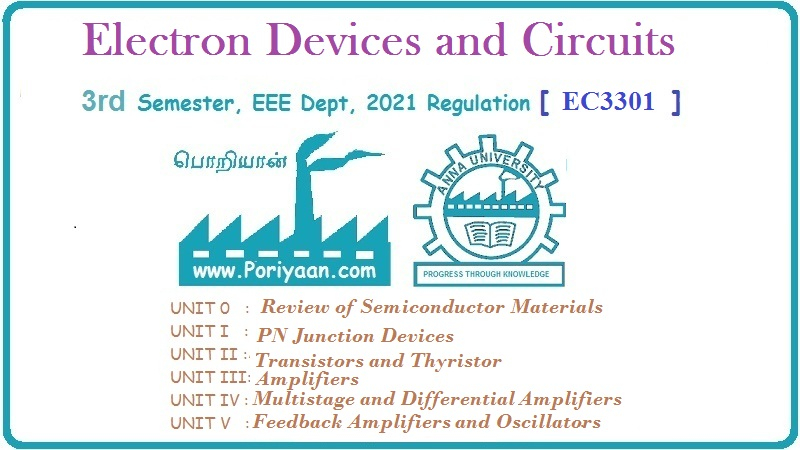Electron Devices and Circuits: Review of Semiconductor Materials (Pre-requisite)
n – Type semiconductor
Extrinsic Semiconductors
When a small amount of pentavalent impurity is added to a pure semiconductor, it is called n-type semiconductor. The pentavalent impurity has five valence electrons. These elements are such as arsenic, bismuth, phosphorous and antimony. Such an impurity is called donor impurity.
n – Type semiconductor
•
When a small amount of pentavalent impurity is added to a pure semiconductor,
it is called n-type semiconductor. The pentavalent impurity has five valence
electrons. These elements are such as arsenic, bismuth, phosphorous and
antimony. Such an impurity is called donor impurity.
•
Consider the formation of n-type material by adding arsenic (As) into silicon
(Si). The arsenic atom has five valence electrons. An arsenic atom fits in the
silicon crystal in such a way that its four valence electrons form covalent
bonds with four adjacent silicon atoms. The fifth electron has no chance of
forming a covalent bond. This spare electron enters the conduction band as a
free electron. Such n-type material formation is represented in the Fig. 0.6.1.
This means that each arsenic atom added into silicon atom gives one free
electron. The number of such free electrons can be controlled by the amount of
impurity added to the silicon. Since the free electrons have negative charges,
the material is known as n-type material and an impurity donates a free
electron hence called donor impurity.

1. Conduction in n-Type Semiconductor
•
When the voltage is applied to the n-type semiconductor, the free electrons
which are readily available due to added impurity, move in a direction of
positive terminal of voltage applied. This constitutes a current. Thus the
conduction is predominantly by free electrons. The holes are less in number
hence electron current is dominant over the hole current. Hence in n-type
semiconductors free electrons are called majority carriers while the holes
which are small in number are called minority carriers. The conduction in
n-type material is shown in the Fig. 0.6.2.

Electron Devices and Circuits: Review of Semiconductor Materials (Pre-requisite) : Tag: : Extrinsic Semiconductors - n – Type semiconductor
Related Topics
Related Subjects
Electron Devices and Circuits
EC3301 3rd Semester EEE Dept | 2021 Regulation | 3rd Semester EEE Dept 2021 Regulation
